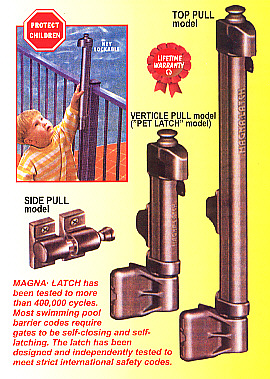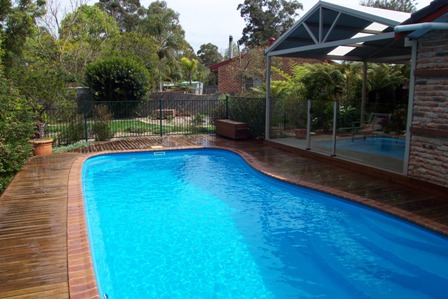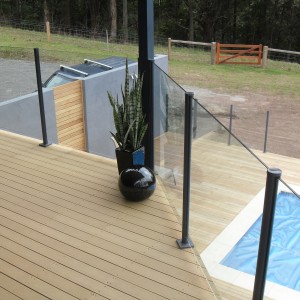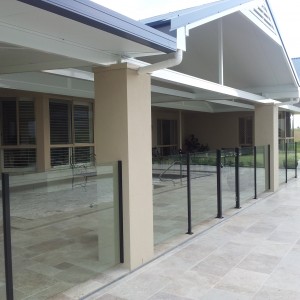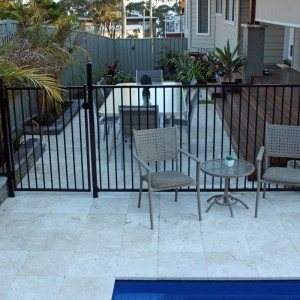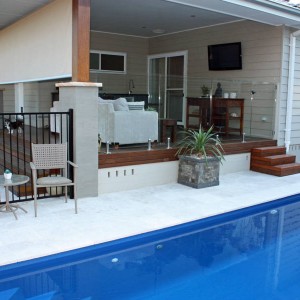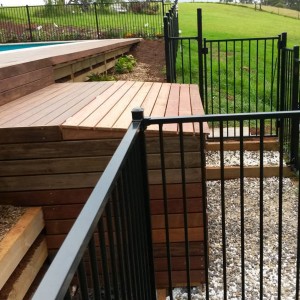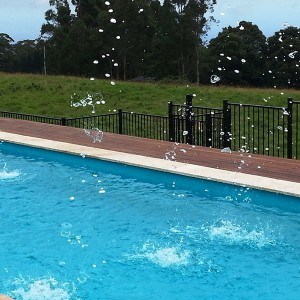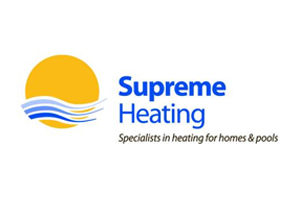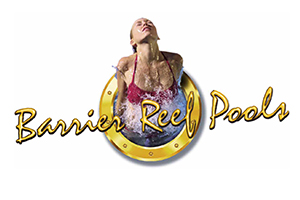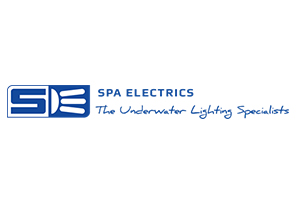The NSW Swimming Pool Barrier Laws
This information is provided as a courtesy. Please personally check the laws and regulations in your area.
Further information from SPASA (Swimming Pool and Spa Assocation)
Overview
The Swimming Pools Act 1992 and its regulations work together with Australian Standard 1926 (AS1926) to establish the safety standards for ‘backyard’ swimming pools. These documents have been updated a number of times and, as a result, apply differently at different points in time.
The legislation can be found here:
The Australian Standard (AS1926) is a document protected by copyright and cannot be reproduced here. Your local council should have a copy of the Standard available for viewing. The relevant versions of the Australian Standard are dated 1986, 2007 and 2012.
A swimming pool is defined as a structure that is capable of being filled with 300mm of water or more and is used for swimming and other water activities. This includes: concrete pools, fibreglass pools, inflatable pools, temporary or wading Pools, above ground pools and spas.
According to the Swimming Pools Act 1992, swimming pools must be surrounded by a Child- Resistant Barrier. It is the pool owner’s responsibility to ensure your swimming pool barrier is in good repair and good working condition.
The Swimming Pool Act 1992 and Swimming Pools Regulation 2018 apply to all swimming pools on premises where there is a residential building, a movable dwelling (eg caravan), a hotel or a motel.
Safety Compliance Laws
The NSW government has introduced new pool safety compliance laws. As a pool owner, you are responsible for ensuring your pool is enclosed and access to it by children is restricted at all times. You are also responsible for ensuring that it complies with relevant Australian Standards and laws.
Registering your swimming pool and/or spa
It is compulsory for all residential pools and spas to be registered.
You can self-register your pool online at the NSW Pool Register. You can also access the site’s self assessment checklists to assist with safety questions at the time of registration.
Selling or leasing a property with a pool and/or spa
From 29 April 2016, properties sold with a pool must have one of: a ‘relevant occupation certificate’; a ‘certificate of compliance’; or a ‘certificate of non-compliance’, issued from the NSW Swimming Pool Register.
This means that from 29 April 2016:
- Vendors are now able to transfer the obligation of obtaining a ‘certificate of compliance’ to the purchaser. A ‘certificate of non-compliance’ can now be attached to the contract of sale.
- The buyer of a property with a non-compliant swimming pool has 90 days from the date of settlement to address any issues of pool barrier non-compliance and obtain a certificate of compliance.
- Properties with more than two (2) dwellings are exempt from the requirement to provide a compliant pool barrier on sale or lease, as they are already regulated through mandatory three (3)-yearly council inspections.
The owner of a property with two (2) or fewer dwellings and a pool must have a certificate of compliance before entering into a lease.
A relevant occupation certificate means an occupation certificate issued under the Environmental Planning and Assessment Act 1979 that is less than 3 years old and that authorises the use of the swimming pool.
Allowing the transfer of obligation for swimming pool barrier compliance provides greater flexibility to the sales process, while ensuring that incidents of non-compliance are addressed. However, this flexibility does not extend to the leasing of properties. Landlords are to ensure that the tenant is provided a copy of a valid ‘certificate of compliance’ at the time the lease is entered into because landlords have a responsibility to provide a safe environment for their tenants.
Key points
- All properties with a swimming pool or spa pool being sold or leased on or after 29 April 2016 will need a valid certificate of compliance, certificate of non-compliance or a relevant occupation certificate.
- A ‘certificate of non-compliance’ will enable the seller to transfer the responsibility to obtain a certificate of compliance to the buyer.
- This transfer will be realised through the attachment of a certificate of noncompliance to the contract for sale.
- The buyer will have 90 days from the date of settlement to rectify defects listed in the certificate of non-compliance and obtain a certificate of compliance.
How do I get a swimming Pool certificate of compliance?
Your local council or an accredited E1 certifier registered with the Building Professionals Board (BPB) can conduct an inspection and issue a certificate if the pool meets all the safety requirements.
SPASA has a number of E1 Certifier members that you can access here in the “Find a Member” section of our website.
Note:
- A swimming pool and/or spa pool certificate of compliance cannot be issued to an unregistered pool/spa.
- A swimming pool and/or spa Certificate of Compliance is valid for a period of three years from the date of issue, so long as the fencing remains compliant in that time.
How can I check if a pool has a certificate of compliance?
- You can check if a property with a swimming pool has a current certificate of compliance by accessing the NSW Swimming Pool Register online at www.swimmingpoolregister.nsw.gov.au and selecting “Lookup pool”.
- Enter the street number, street name (do not type in road, street, lane etc.) and the suburb.
- Select “Find property” and the address will appear if the property has a valid certificate of compliance.
What happens if a pool doesn’t comply at the time of inspection?
If a pool and/or spa is inspected and the barrier is found to be non-compliant with the pool safety requirements, the council inspector or private certifier will provide the owner with written details of any non-compliances found as well as what is required to achieve compliance.
NOTE: Home owners should never rely on verbal advice or directions provided by a Council inspector or Private Certifier in relation to alleged non-compliances.
Home owners should demand that any advice be in writing and that the advice properly articulates any non-compliance as well as identifies and lists the relevant clauses within the legislation, Standard and Building Code of Australia they are asking the home owner to comply with.
What are the penalties for non-compliance?
The owner of the pool and/or spa may be liable for a penalty of up to $5,500 for non-compliance with the pool safety requirements. On-the-spot fines of $550 can also apply.
Enforcement action is taken by local councils, and may be triggered by a complaint or concern raised by a neighbour, or during a routine inspection of the swimming pool as part of the council’s pool safety inspection program.
Resources
| Swimming Pools Act 1992 |
| Swimming Pools (Amendment) Act 2012 |
| Swimming Pools Regulation 2018 |
| Home Building Act 1989 |
| Home Building Regulation 2004 |
Glass Fencing

Aluminium Fencing Profiles
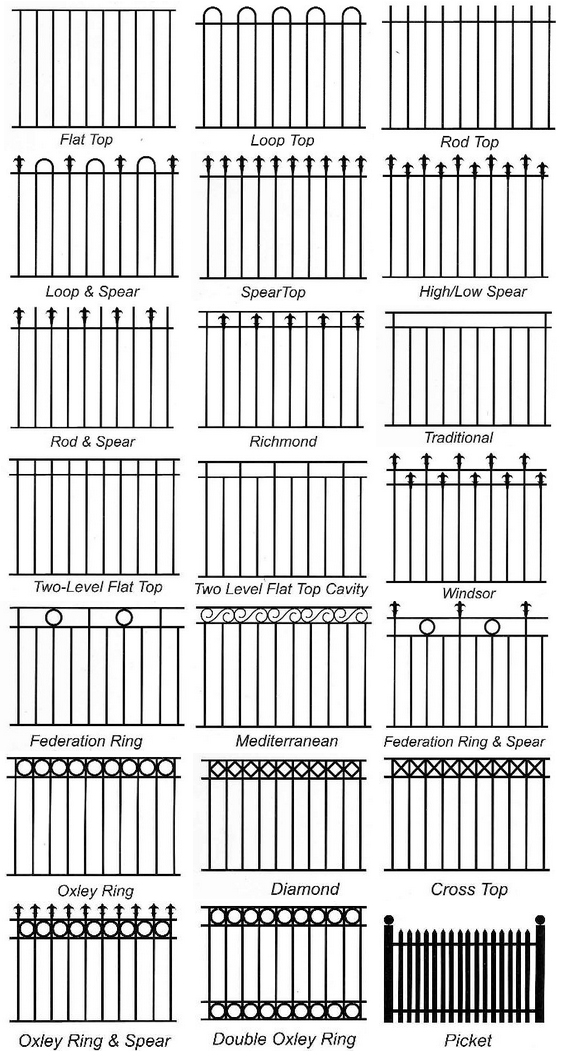
Magna Latch
